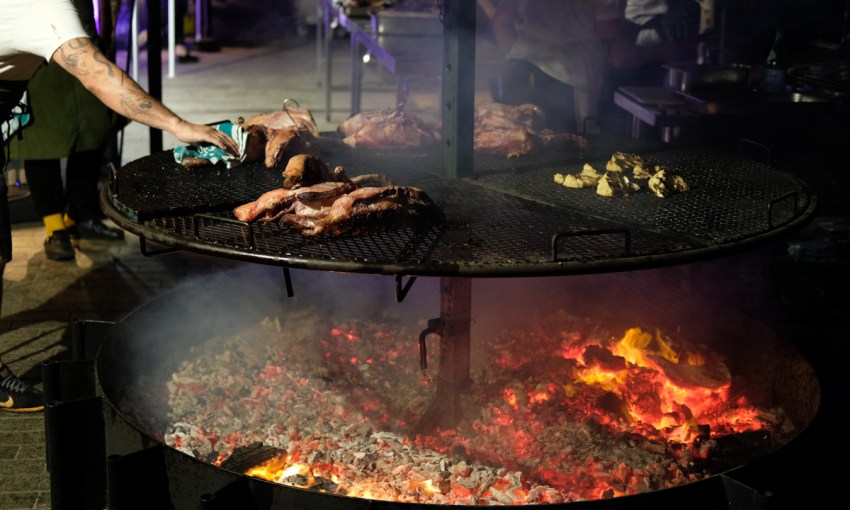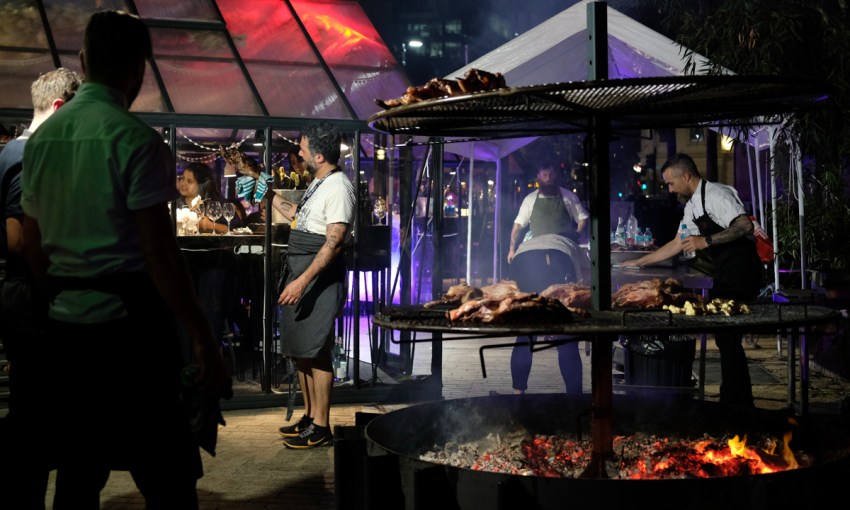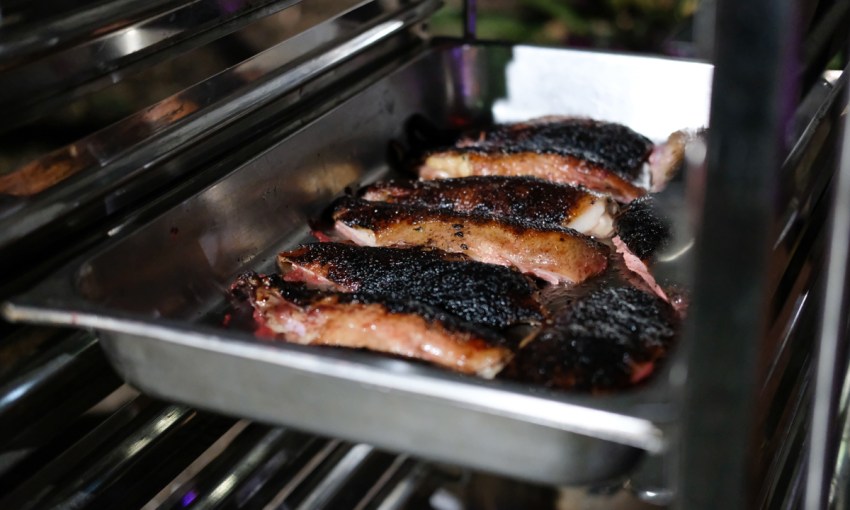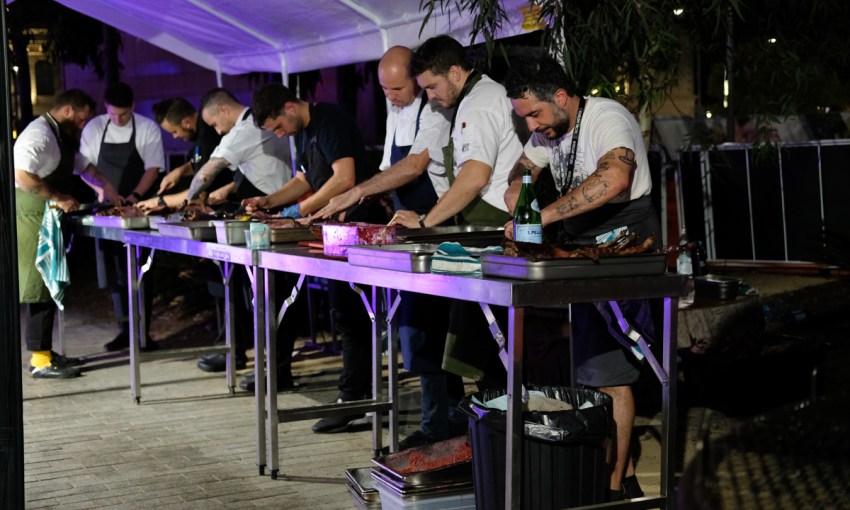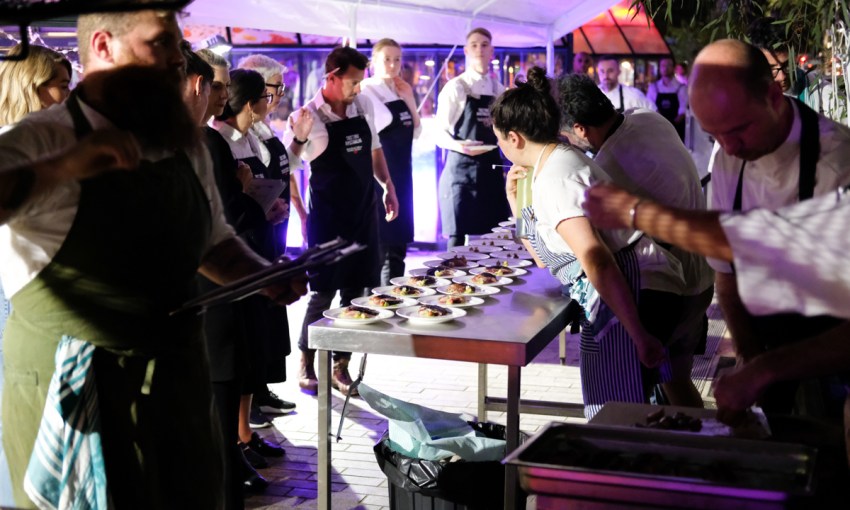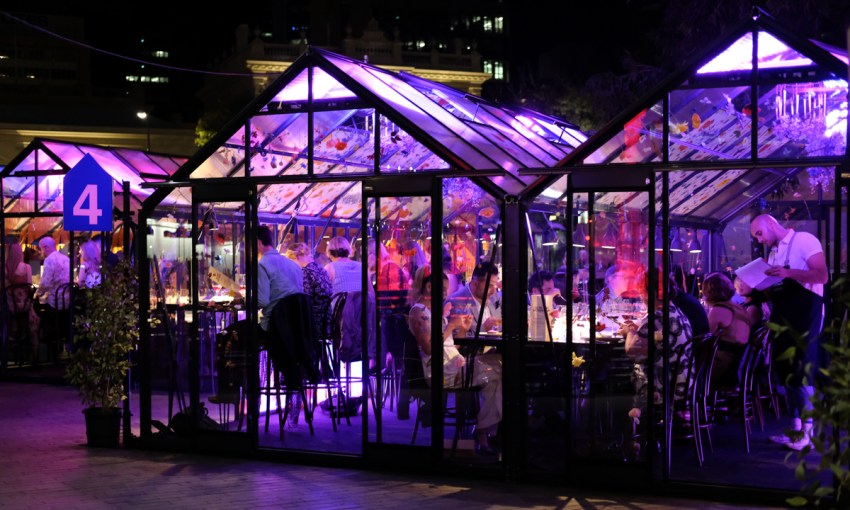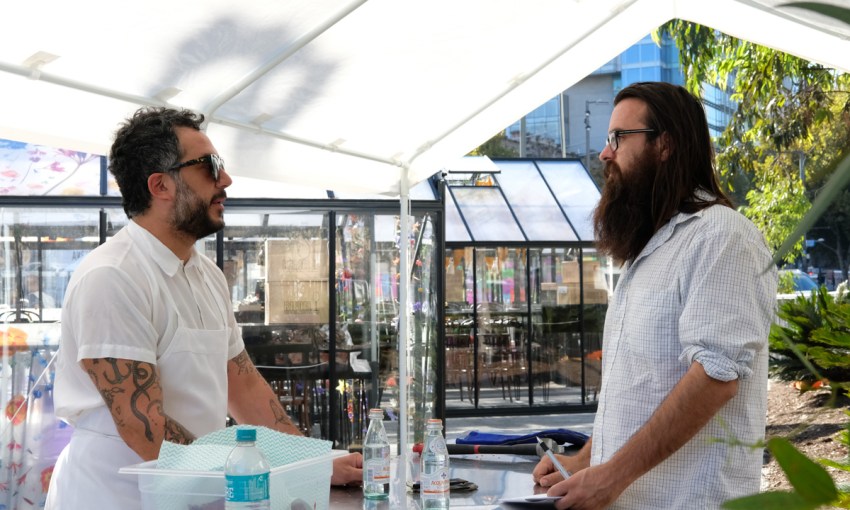Stationed amid the flames of Tasting Australia's Glasshouse Kitchen, CityMag bore witness to Michelin-starred Brooklyn chef Carlo Mirarchi expanding his 12-seat concept to a 160-head dinner.
Behind the scenes of the Glasshouse Kitchen
Last Friday night Carlo Mirarchi was the star chef for one of Tasting Australia’s showcase dinners. And yet two days before he was due to start cooking, he had not tasted any of the ingredients he planned to use. This was not some obscure new chef challenge, though – the opening weekend of the festival happened to coincide with his brother’s wedding in Panama.
“So I left Panama on Monday morning and got here… Wednesday,” he says with a laugh, pausing as he tries to remember what day it is. “Then we came straight from the airport to the kitchen.”
Despite this, he seems remarkably relaxed for a man who’s just had his first encounter with the ingredients he’ll be using to cook for 168 people at Naturale. Or maybe he’s just jetlagged.
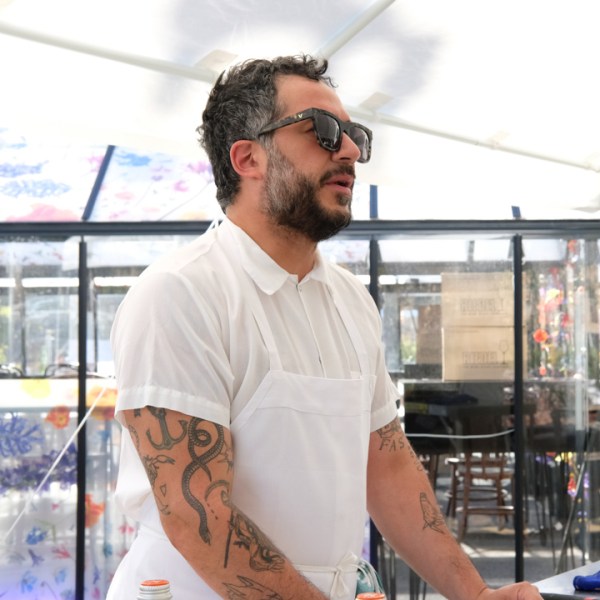
Chef Carlo Mirarchi.
Carlo rose to prominence as the man behind Roberta’s, an ultra hip Bushwick pizza joint that has been pushing gentrification deeper into Brooklyn since 2008. His adjoining fine dining restaurant Blanca has been awarded two Michelin stars and briefly hosted Jock Zonfrillo as part of a worldwide chef swap in 2016.
That local point of contact proved incredibly useful as Carlo first began thinking about his Tasting Australia meal, asking the Orana chef about flavour profiles and the availability of potential ingredients. These initial preparations began months in advance, and when Carlo eventually chose Aylesbury ducks as his hero ingredient, he decided to dry age the ducks beforehand.
Jock, again showing the value in having a local contact, conducted a trial run with two birds well in advance to figure out the ideal preparation time, and the decision was made without him ever actually tasting the birds.
This, it seems, is part of the compromise of an international chef who flies halfway around the world to cook a dinner with low food miles. The pair concocted a very 21stCentury plan that saw Jock texting daily updates on the condition of the ducks, accompanied by photos, so that Carlo could observe their progress.
By the time he arrived in Adelaide, Carlo had to work quickly to taste everything else he was going to work with. When CityMag meets him the day before the dinner, he’d settled on the outline of his dish and done a lot of prep but was still tasting ingredients and said that the final decision would probably be made on the day.
While his original idea appeared to involve a range of tropical fruits, he settled on a sauce using plums and buckwheat miso after a quick excursion to a local orchard with Jock, who seems to have played his role as ambassador to a tee.
On the night, the menu simply states “aged Aylesbury duck, smoky avocado.” For a dinner celebrating simplicity it was right on theme, but importantly it also allowed for a lot of last minute wiggle room.
At 5:30pm, 80 duck crowns are arrayed around a fire pit and a team spends two and a half hours cooking them and breaking them down in full view of the arriving diners.
Carlo’s appearance is very casual, an apron thrown over a t-shirt, shorts and trainers; more likely a reflection of his laid-back demeanour than a concession to the proximity of the hot coals.
As the time to serve his course approaches, he tells several sous chefs exactly how he wants the duck breast sliced. Beads of sweat form on the brows of the prep team as they lay plates out on the table and begin carefully placing wild strawberries on them. The initial plan had been to forage these, but time constraints and the volume of diners meant that in the end they were sourced from a local supplier, who also suggested they use the leaves and flowers.
The prep team swells and it prompts the question – how many cooks is too many? Blanca only seats twelve patrons, and soon this team swells to as many as fifteen, but the volume doesn’t phase Carlo. “I still work a lot in Roberta’s where we’re doing 600 covers in a day so we’re used to it,” he’d told me a day earlier. “You just have to make sure you have a solid plan and you know exactly what you’re doing, that’s all.”
Apparently that plan isn’t progressing quite fast enough and it becomes apparent they need to speed up the service. The call goes out and more knives are procured, additional chefs are instructed on exactly how to slice the breasts. A piping bag reveals that the smoky avocado will appear in the form of a puree, and Carlo is on hand to plate the duck himself, working efficiently without betraying any outward signs of pressure.
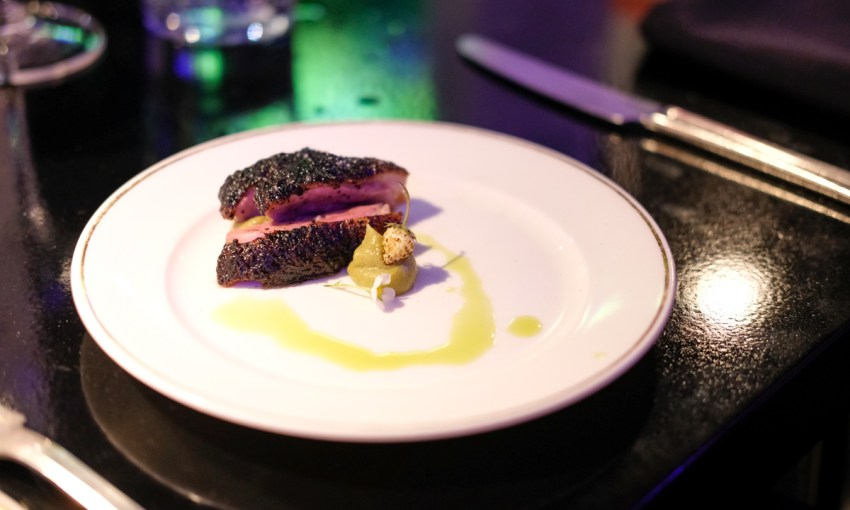
Carlo’s plated “aged Aylesbury duck, smoky avocado.”
Carlo announces that the last dish has been plated and the chefs burst into applause, with still plenty of duck left unsliced. And then, somewhat anticlimactically, they immediately begin to pack up the sizeable amount of leftover duck and move out.
Some of the team stays to clean up, others quickly track down their knives before dispersing and getting ready for the next course. Suddenly, a server announces that they’re two serves short and two more plates are hurriedly prepared before the vigorous cleaning of the stainless steel tables recommences.
All this has taken maybe 15 minutes in full view of the diners, and the most surprising thing is how little fuss there has been. There were no raised voices, no injured egos, just a very efficient team. The theme of the night is “beauty in simplicity”, and for the diners, that’s exactly what they get. Four dishes brought out, each one perfectly plated and served with a smile. It belies the enormous amount of effort that goes into the night, and I can’t help but reflect on how Carlo described his own contribution a day earlier.
“The food that we do is pretty straightforward, but there’s a lot of technique behind it. We’re sourcing and highlighting ingredients and certain techniques to make that process happen, so what appears very, very simple is not actually a simple process. But when you taste the depth of flavour and complexity and textural contrast and the acidity, I think it ends up being worth it.”



